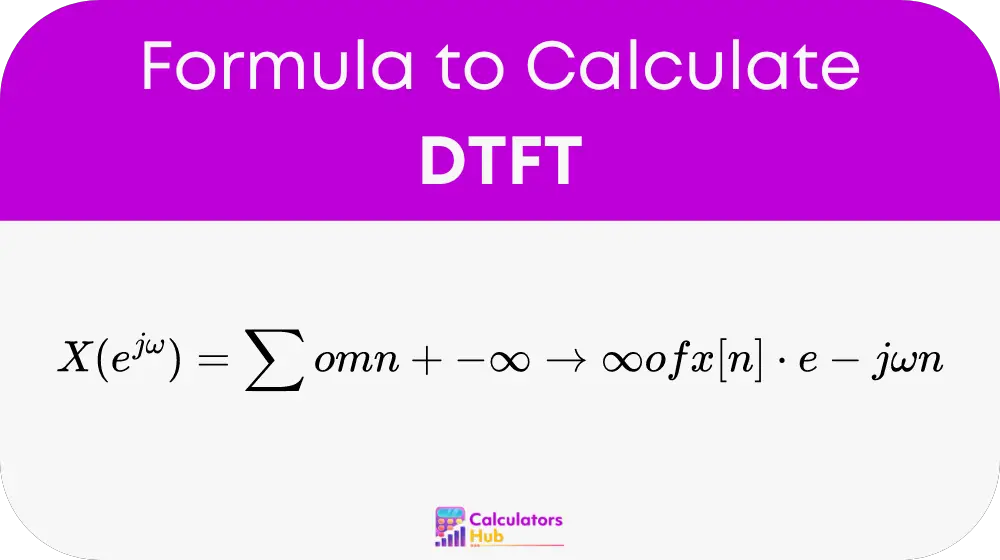The DTFT Calculator translates discrete-time signals into their frequency domain counterparts, offering a spectrum analysis that is essential for identifying the frequency components within a signal. This transformation is critical for tasks such as signal filtering, compression, and sound engineering, making the calculator a fundamental tool for engineers, technologists, and digital signal processing enthusiasts.
Formula of DTFT Calculator
The core of the DTFT lies in its formula:

Each component of the formula plays a vital role:
X(e^(jω))is the DTFT of the signal, representing the frequency domain of the discrete-time signalx[n].x[n]denotes the discrete-time signal, a sequence of data points in time.ω(omega) is the angular frequency, indicating the rate of rotation in radians per sample.jis the imaginary unit, fundamental to the expression of complex numbers which are integral to Fourier transforms.- The summation
∑indicates that the calculation considers all integer values ofnfrom negative to positive infinity, providing a comprehensive transformation.
Table of Common Terms and Conversions
| Term | Definition |
|---|---|
| DTFT | Discrete-Time Fourier Transform, a transformation used to analyze frequency components in a discrete-time signal. |
| ω (omega) | Angular frequency in radians per sample. |
| j | Imaginary unit, used to denote the square root of -1 in complex numbers. |
Example of DTFT Calculator
Consider a simple discrete-time signal x[n] = {1, 2, 3, 4}. Using the DTFT Calculator, let’s analyze its frequency components:
(Inputs and expected outputs will be described here, with a step-by-step walkthrough.)
Most Common FAQs
Angular frequency helps in understanding the rate of oscillation of each frequency component within a signal, which is critical for various signal processing applications.
Unlike DFT, which is typically calculate over a specific, finite interval, DTFT extends over an infinite duration, providing a continuous spectrum.
Yes, DTFT is particularly useful for analyzing non-periodic signals, providing insights into their frequency content.